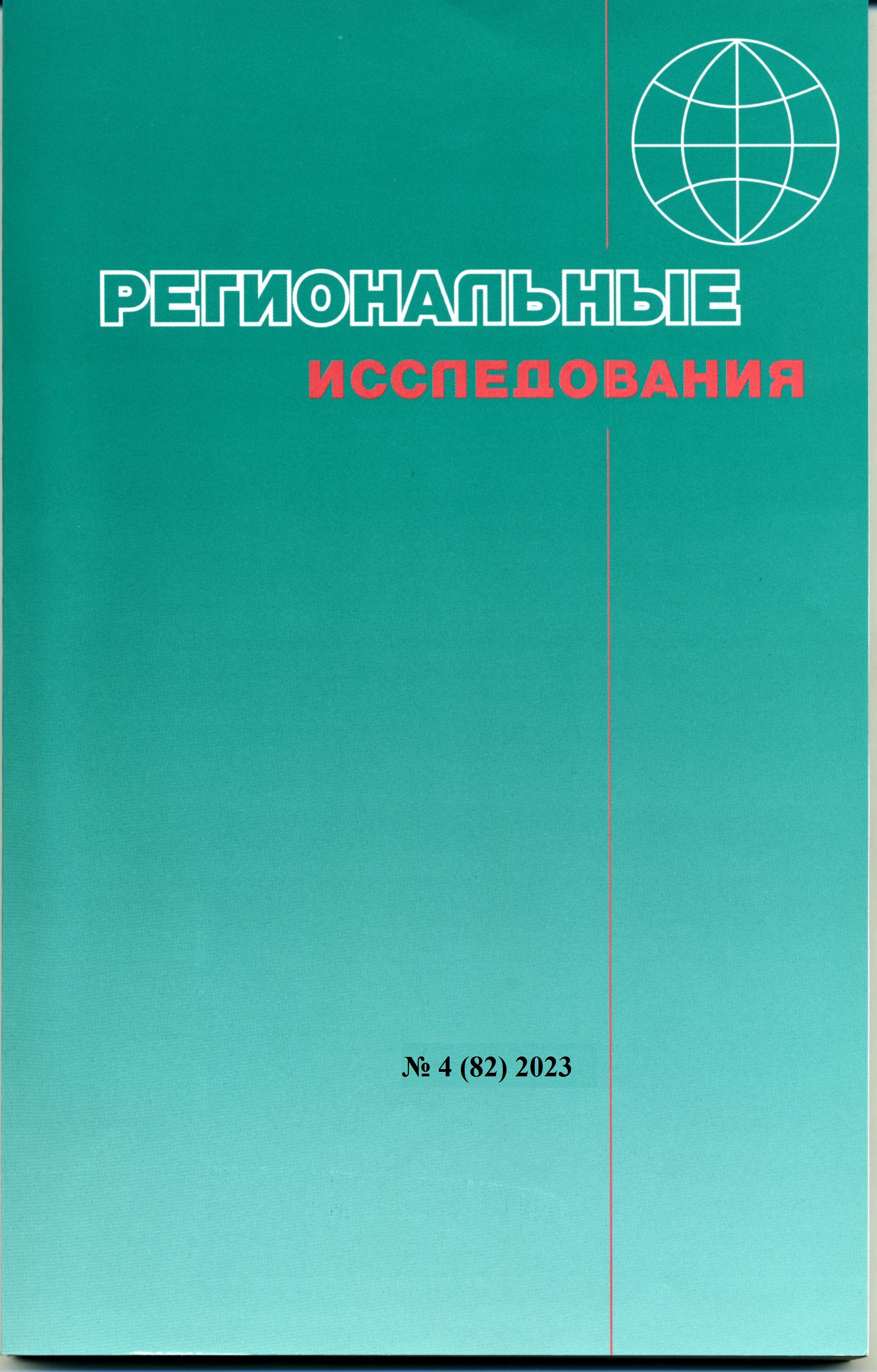Gazaryan G.S., Grechko E.A. Formation of modern value chains in clothing production: geographical aspects
DOI:
https://doi.org/10.5922/1994-5280-2023-4-1Keywords:
clothing production, global value chains, geographical structure of production, formation of clothing costs, clothing tradeAbstract
The study focuses on countries‘ participation in global value chains (GVCs) in clothing production. Special attention is given to the creation of value in the clothing industry across various stages of GVCs. It also explores the distribution of specific operations and agents worldwide, highlighting the differences in participation among countries and regions at each stage. In the production of low-cost clothing, the countries of Southeast Asia, Turkey, India, and China stand out, and the non-production stage (design, branding) is confined to the countries where brand-owning companies are based, for example, France, Germany, Italy, Spain, and the USA. Digitalization and sustainable development are new factors considered in changing value chains, resulting in an increased number of participants from previously disadvantaged countries and a bigger market share of them. Under the influence of the concept of sustainable development, the share of the clothing market made from recycled or environmentally friendly raw materials is increasing: countries that previously did not have competitive advantages in this industry are being involved in the value chain, for example, Sri Lanka, Kenya, Israel (creation of recycled synthetic raw materials); Uruguay, Argentina and South Africa (eco-wool), China and India (eco-cotton). The development of e-commerce leads to a shift in value generation from countries hosting retail stores to countries where the largest warehouses of companies and online stores, as well as offices of transport companies, are located. Keywords: clothing production, global value chains, geographical structure of production, formation of clothing costs, clothing trade.
References
Акимова В.В., Купцова М.А. Швейная промышленность Азии на современном этапе: географические особенности развития и главные ареалы концентрации // Вестн. С.-Петерб. ун-та. Науки о Земле. 2022. Т. 67. Вып. 3. С. 386–408. DOI: 10.21638/spbu07.2022.301.
Варнавский В. Международная торговля в категориях добавленной стоимости: вопросы методологии // Мировая экономика и международные отношения. 2018. Т. 62. № 1. С. 5–15. DOI: 10.20542/0131-2227-2018-62-1-5-15.
Кондратьев В.Б. Глобальные цепочки добавленной стоимости в современной экономике. [Электр. ресурс]. Сетевое издание Центра исследований и аналитики Фонда исторической перспективы «Перспективы». 2014. URL: https: //perspektivy.info/oykumena/ekdom/globalnyje_cepochki_dobavlennoj_stoimosti_v_sovremennoj_ekonomike_2014-03-17.htm (дата обращения: 10.01.2023).
Кондратьев В.Б. Мировая экономика как система глобальных цепочек стоимости // Мировая экономика и международные отношения. 2015. № 3. С. 5–17.
Лим Р. Как экономический подъем Китая и Индии прокладывает дорогу для интеграции Азии // Финансы и развитие. 2006. Т. 43. № 2. С. 28–31.
Панкратов И.Н., Федорченко А.В. Типология стран по их роли и участию в мировой швейной промышленности // Вестн. Моск. ун-та. Сер. 5: География. 2010. № 5. С. 42–47.
Потоцкая Т.И. Международное разделение труда в алмазно-бриллиантовом комплексе // Вестн. Моск. ун-та. Сер. 5: География. 2008. № 5. С. 15–19.
Шишков Ю.В. Интернационализация производства – новый этап развития мировой экономики. М.: ИМЭМО РАН, 2009. 92 с.
Buchholz K. Is China Losing Its Export Prowess? [Электр. ресурс]. Statista. 2022. URL: https://www.statista.com/chart/28528/share-of-global-exports-from-china/ (дата обращения: 09.03.2023).
Casadei P., Gilbert D. The hunting of the fashion city: Rethinking the relationship between fashion and the urban in the twenty-first century // Fashion Theory. 2020. № 24. P. 393–408.
Fróes de borja reis Cristina and Barroso de Souza André Drawing value curves: lessons from financial statements of the world’s biggest manufacturing corporations // Revue d’économie Industrielle. Vol. 3. № 163. P. 229–262. DOI: 10.4000/rei.7506.
Gereffi G., Memedovic O. The Global Apparel Value Chain: What Prospects for Upgrading by Developing Countries. UNIDO, Vienna, 2003. 36 p.
Marín-Odio A. Global Value Chains: A Case Study on Costa Rica // International Trade Centre Technical Paper, Geneva, 2014. 28 p.
Shih S. Empowering technology-making your life easier // Acer’s Report, Acer’s, New Taipei, 1992.
Zhang Miao, Kong Xin-Xin, Chenayah Ramu Santha The transformation of the clothing industry in China // Asia Pacific Business Review. 2016. Vol. 22 (1). P. 86–109. DOI: 10.1080/13602381.2014.990204.
В России резко вырос объем интернет-торговли (со ссылкой на данные АКИТ). [Электр. ресурс]. MegaResearch. 2022. URL:
https://www.megaresearch.ru/new_reality/v-rossii-rezko-vyros-obeminternet-torgovli (дата обращения: 13.05.2023).
Дизайнерское подразделение GUCCI. Рим, Италия [Электр. ресурс]. URL: https://careers.gucci.com/ru/house/guccis-design-office/(дата обращения: 19.04.2022).
Ежегодный аналитический отчет «Рынок интернет-торговли в России». [Электр. ресурс]. InSales, 2014. URL: https://www.insales.ru/blogs/insales/rossiyskiy-rynokinternet-torgovli-v-2013godu-sostavil-470-mlrd-rubley (дата обращения: 13.05.2023).
Eureka! Discover Our Innovation Lab [Электр. ресурс]. Levi Strauss &Co. URL: https://www.levistrauss.com/2017/02/17/eureka-innovation-lab/(дата обращения: 15.10.2022).
Global Fashion Industry Statistics [Электр. ресурс]. FashionUnited, 2021. URL: https://fashionunited.com/global-fashion-industry-statistics (дата обращения: 07.02.2023).
Global Polyester Yarn Exports Rising Since 2017. [Электр. ресурс]. FIBRE2FASHION. 2019. URL: https://www.fibre2fashion.com/news/textilenews/global-polyester-yarn-exports-rising-%20since- 2017-252377-newsdetails.htm. (дата обращения: 12.05.2023).
Global Textile Industry Factsheet 2020: Top 10 Largest Textile Producing Countries and Top 10 Textile Exporters in the World. [Электр. ресурс]. URL: https://blog.bizvibe.com/blog/top-10-largest-textileproducingcountries (дата обращения: 18.11.2022).
Global Trade Slows, but “Green Goods” Grow [Электр. ресурс]. Press Release. 2023. URL: https://unctad.org/press-material/global-trade-slows-green-goods-grow (дата обращения: 09.09.2023).
Leading Cotton Producing Countries Worldwide in 2021/2022. [Электр. ресурс]. Statista. 2022. URL: https://www.statista.com/statistics/263055/cotton-productionworldwide-by-top-countries/(дата обращения: 15.10.2022).
Map of Supplier Facilities [Электр. ресурс]. Levi Strauss &Co. URL:
https://levistrauss.com/wpcontent/uploads/2018/07/Levi-Strauss-Co-Factory-Mill-ListJune-2018.pdf (дата обращения: 15.10.2022).
Preferred Fiber & Minerals. Market Report 2020. [Электр. ресурс]. Textile Exchange, USA. 2020. URL: https://textileexchange.org/wp-content/uploads/2020/06/TextileExchange_Preferred- Fiber- Material-Market-Report_2020.pdf (дата обращения: 07.02.2023).
Production of Polyester Fibers Worldwide from 1975 to 2022. [Электр. ресурс]. Statista. 2022. URL: https://www.statista.com/statistics/912301/polyester-fiberproduction-worldwide/(дата обращения: 12.05.2022).
Secondhand Apparel Market Outlook (2022–2032). [Электр. ресурс]. Future Market Insights, Delaware, USA. 2022. URL: (дата обращения: 09.10.2022).
Textiles and Clothing (% of Value Added in Manufacturing) – China, Bangladesh, Cambodia, Mauritius, Sri Lanka [Электр. ресурс]. United Nations Industrial Development Organization, International Yearbook of Industrial Statistics. 2022. URL: https: //data.worldbank.org/indicator/NV.MNF.TXTL. ZS.UN?end=2021&locations=CN-BD-KH-MU-LK&start=1966&view=chart (дата обращения: 01.03.2023).
Textiles. Exporters and Importers: Historical Data. [Электр. ресурс]. The Observatory of Economic Complexity, Massachusetts, USA. 2021. URL: https://oec.world/en/profile/hs92/textiles (дата обращения: 16.04.2023)

